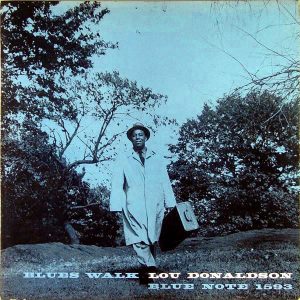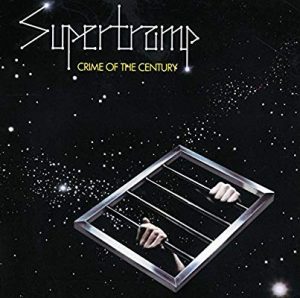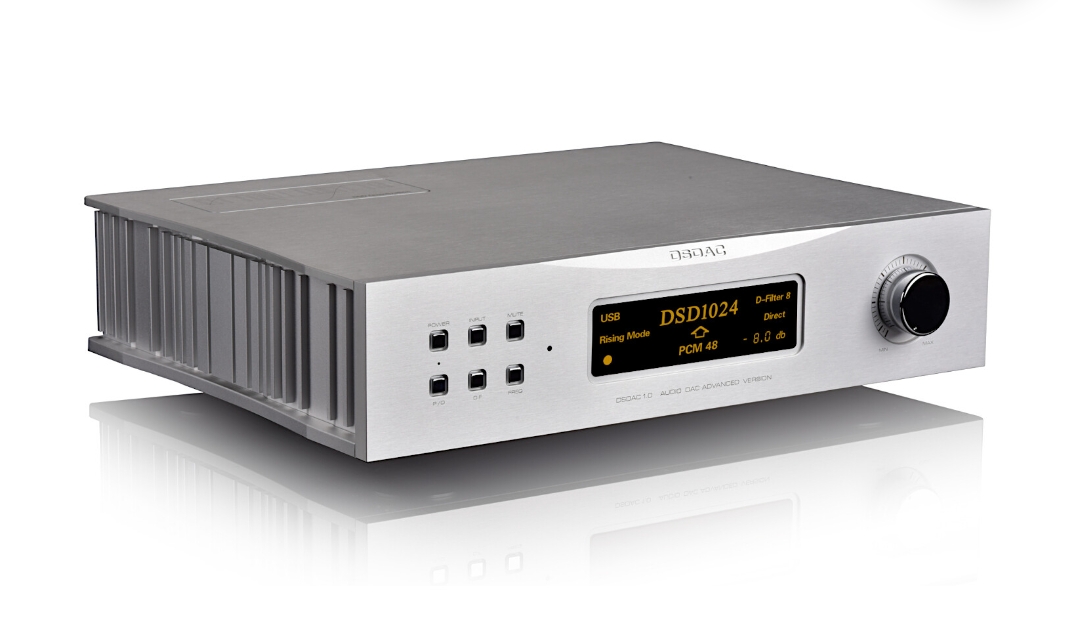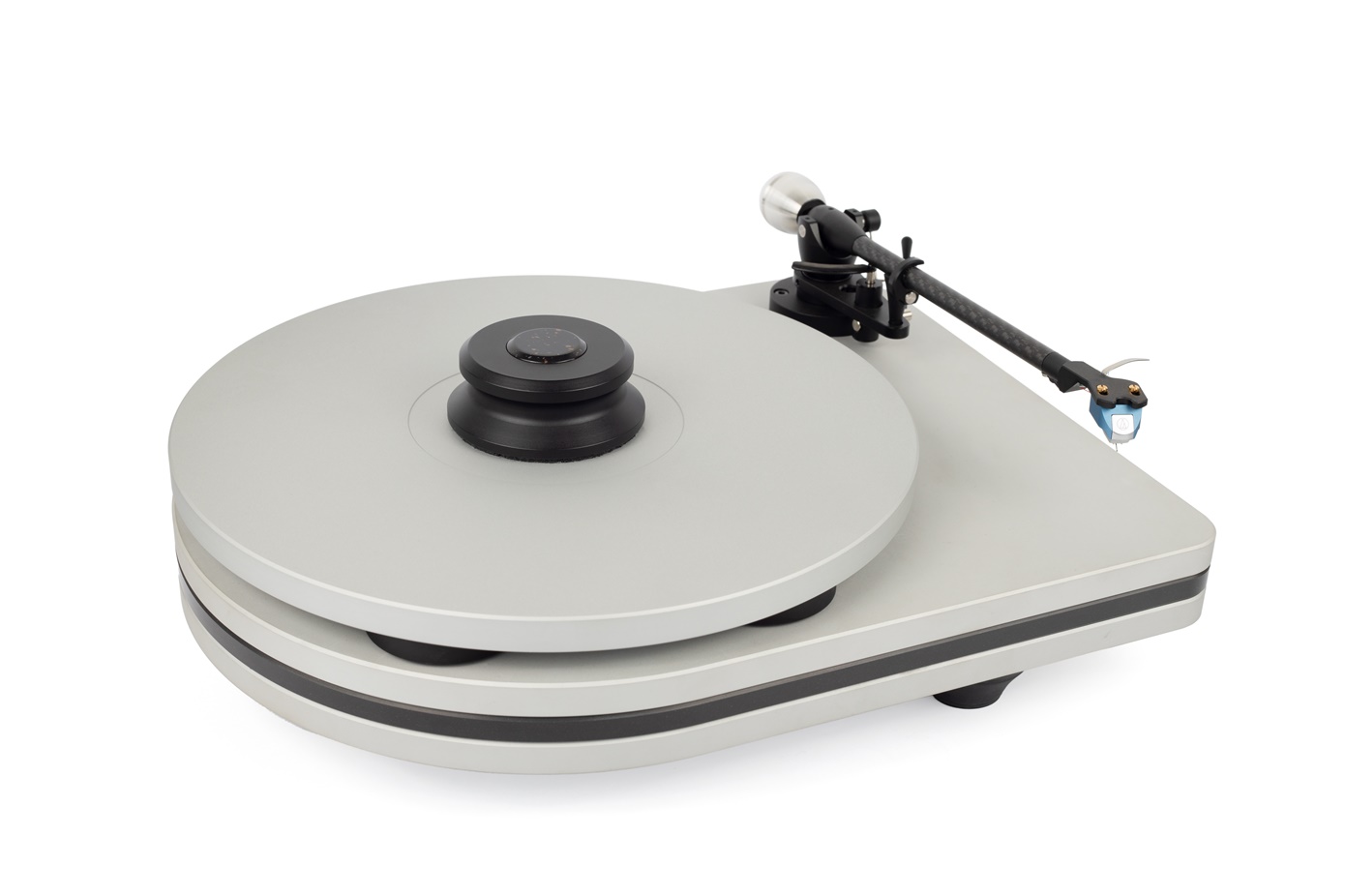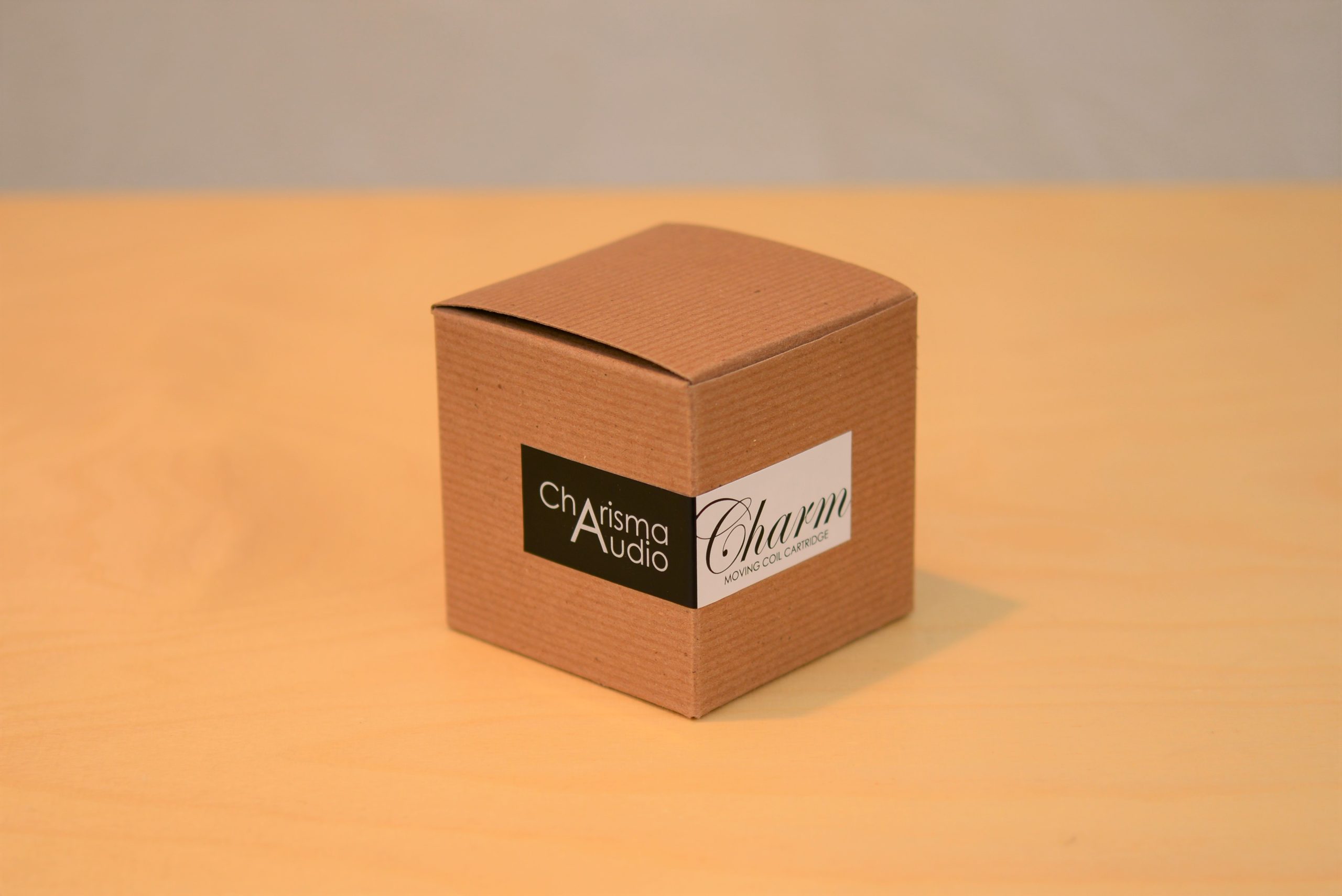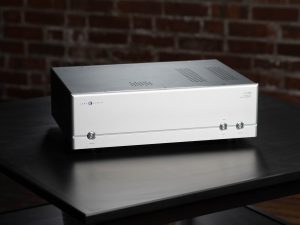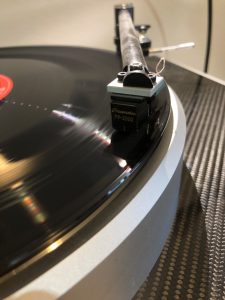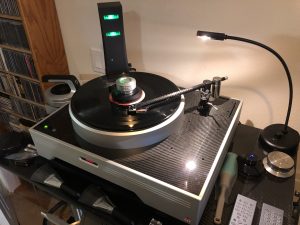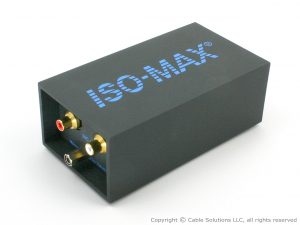The savvy audiophile is keenly aware of the weakest link of the chain theory when it comes to our hobby. The arena of vinyl playback is one place where this event is illuminated with the brightest of lights. Vinyl hobbyists will debate cartridge types, turntable drive formats, and the methodology for cleaning vinyl, however all of us will acknowledge how difficult it is to find a well-rounded and flexible phono stage for any kind of sane money. Now there certainly are many good phono stages to be had, although finding the truly excellent ones is a quest that more than one vinylophile has set out upon. While I cannot give you a treasure map to analog bliss, I can let you know about the Stellar Phono preamplifier that PS Audio has just released. The Stellar Phono is a full function preamp that can bring out the best in moving magnet and moving coil cartridges; and happens to be one of the more convenient phono stages a person could use. Check this out, there is a remote control! We will get to the details in just a minute, although I thought I should give you a bit of a preview of what is an unusual and useful component feature that PS Audio has included. The Stellar Phono sells for $2499, yet at this price point this phono preamplifier offers an uncommon value, as it provides a level of audio reproduction that is not often encountered at this price point.
PS Audio has a long-standing reputation of building quality products, although it seems to me their latest offerings reveal that the folks in Colorado have taken their products to the next level. I expect PS Audio components to be well designed, with excellent fit and finish, innovative circuit design, and tangible value for the dollar being asked. The Stellar Phono preamplifier did not disappoint in any category, and I will say that the build quality and aesthetics of this component are nicely executed. The front panel on the Stellar Phono is understated, and the display is easy to read, with all the pertinent information needed to facilitate adjustments through the remote control. My review sample has a silver finish that is flawless, and all panels are precisely fitted, which is visible when you take a moment to examine it with a critical eye. The Stellar Phono is a full-sized component, and when you lift it out of the box you realize there is a good deal of heft to this piece, which alludes to a robust power supply hidden under those aluminum panels. I will say that the Stellar Phono makes a good first impression when it is unboxed, but then again that is what I expect from a PS Audio offering.
The Stellar Phono preamplifier has a wide array of adjustments for both moving magnet and moving coil cartridges. The moving magnet side is set at the standard resistive load of 47K ohms, with a 100 picofarad capacitive load. The gain settings available on the moving magnet side are 44, 50, and 56 dB. In the moving coil configuration, the loading options are 60, 100, 200, and 47K ohms, however there is a custom load option that can be configured by a pair of potentiometers on the back of the unit. This custom load options allows the user to select any setting between 1 and 1000 ohms. The user can also select 60, 66, and 72 dB of gain when the moving coil mode is selected. Frequency response is 20Hz to 20kHz with +/- .25dB variation. Maximum output voltage is 24V, which happens to make this phono stage an excellent candidate to be paired with a passive preamplifier.
The Stellar Phono has separate inputs for the moving magnet and moving coil stages, and therefore can be used with two different cartridges. Located between the two input RCA jacks for the moving coil input are the potentiometers for the custom load setting. The detachable IEC power cord socket is on the right side of the back panel, as is the master power switch. There is a second power switch on the front panel, which is turned on when the phono stage is ready to be put into service. One interesting attribute of this component is that the muting function is automatically selected when the unit is turned on. I suspect many an owner will find the versatility of the remote control to be a strong point of the Stellar Phono. From the remote you can control power, muting, gain settings, switch between MM and MC, and select all loading options. Aside from varying the custom load option, all pertinent functions can be selected from the remote control.
Darren Myers at PS Audio is responsible for this excellent phono stage; and took a bit of time to explain what was under the hood of the Stellar Phono and highlight the reasons why this piece performs as well as it does. This circuit is a fully discrete design with parallel Toshiba JFET devices on the input side, and MOSFET output devices on the back end. The circuit is DC coupled, uses short signal path, and both input and output devices are biased in Class A mode. RIAA equalization is accomplished with a passive configuration, and finally, high quality film and foil capacitors from Wilson Audio’s Reliable lineup were carefully selected. One interesting tidbit of information that Darren passed on is that an early version of this circuit utilized a significant amount of global negative feedback, which allowed for excellent measured specifications, yet resulted in a sterile and compressed presentation. Lowering global negative feedback and adjusting local feedback loops became a breakthrough that allowed for an open and engaging presentation. Once again, we have an example of specifications being a valuable tool in the design of a component, but the listening sessions being the litmus test of when the design is truly mature.
For this review the Stellar Phono preamplifier replaced the Esoteric E-03 that is my long-term reference phono stage. The SOTA Cosmos Eclipse has become my primary table, and I also pressed into service a Well-Tempered Reference as a more affordable alternative to the SOTA. The Cosmos is fitted with a SME V arm and Transfiguration Proteus cartridge, while the WTR has an Ikeda 9 cartridge installed. Amplification duties are handled by a Halcro DM8 preamplifier and PS Audio BHK 250 Signature amplifier. A pair of JBL 4365 monitors are wired to the PS Audio amplifier via a run of Wireworld Eclipse 8 speaker cables. Interconnects are the Silver Apex from Analysis Plus. Power conditioning to all components is performed by a PS Audio PerfectWave P10 Power Plant regenerator.
Reviewers often spend their time dissecting the overall presentation of a component, and through the deconstruction process at times we fail to present the holistic audio experience. What I hear from my first serious listening sessions with the Stellar Phono is how this component portrays the big picture of music, specifically it gets every meaningful aspect of tonal balance correct; and does it in a seamless manner. In a summary statement, well, it just sounds right. One album I played on the SOTA is Blueswalk by Lou Donaldson (Blueswalk, Blue Note AP-81593) and Donaldson’s saxophone work on the title track sound is rich and full bodied, yet still maintaining that sharp edge that a defines this instrument. There is a degree of texture to instruments that strikes a chord with me, where I feel the presentation is properly balanced between detail, warmth, and dynamic swing. The conga passages have both a reverberant decay and a hollow sound that allows for easy identification of the instrument. The high-hat cymbal in the drum kit exudes a metallic sheen that creates such a realistic feel, and it is yet one more element that sounds seductively real and pulls me into the music. While I did not critically listen to this phono stage while breaking it in for 50 hours, I can say that even on that first night where I sat down to give it that first serious listening, the Stellar Phono impressed me with its ability to play music with a natural and expressive presentation.
Given half a chance, seasoned audiophiles will chant the mantra of "it is in the midrange where the magic happens." When you get down to it, well there is more than a grain of truth to that line of reasoning. If an audio system can excel in this all-important area, you are going to get some excellent audio playback. The Stellar Phono preamplifier has that enviable balance between rich tonal structure, and a high degree of resolution when tasked with presenting micro level detail in music. This is essentially the phono stage's ability to represent not only the texture and tone of music, it accurately presents the space and focus of a recording. From the Shadowdance album by Shadowfax I selected the opening of "Brown Rice" (Shadowdance, Windham Hill WH-1029) to listen to, and the degree of detail to the whispered vocal phrases is truly excellent, as they are clear and precise. The decay of the wooden sticks being struck together has a believable presence, and the pluck notes on the guitar are full and rich sounding, especially when juxtaposed against the wood percussion instruments. Moving on to "New Electric India," the Stellar Phono stage is required to maintain this high level of resolution with a far more complicated and dynamic composition, and this phono stage rises to this challenge like a champion. Percussive instruments are taut, lightning quick in the decay pattern, and have the correct tone and harmonic texture. The electric guitars and violin on this song are vibrant, with an energetic attack to their passages. The spacing of instruments in relation to each other is believable, and the size of the composition has a realistic portrayal. This album was mastered without the use of compression or dynamic limiting, and on "New Electric India" this phono stage allows for all the dynamic complexity to flow from the system.
The Stellar Phono preamplifier projects an expansive sound stage, with the ability to extend wall to wall and create the illusion of the venue imagined by the artist. Often, I will play "Ode to Boy" (You and Me Both, Sire Records 2390371) by Yaz in order to see how a component handles spatial demands. The Stellar Phono performed particularly well in this regard, with the soundstage reaching past each speaker by a good margin, with spacious height and depth to the soundstage, and yet was able to maintain a precise focus of the performers and instruments. Vocals were anchored on each side of the stage and just on the inside edge of the speakers, and extended several feet into the room, while background vocals would pop out the nothingness and then traverse the soundstage and fade away. The synthesized bass lines were positioned in the far reaches of the soundstage, yet could be located even though various instruments were placed in front of them. Other instruments filled the soundstage and were anchored firmly to a fixed location, even if I did move from side to side in my listening area. Overall, I would say this phono preamplifier handled the spatial demands as well as any phono stage I have encountered in this price range. Frankly, the Stellar Phono was the equal of the Esoteric E-03 I currently use, and which happens to have a price tag that more than doubles this component.
This discussion of the Stellar Phono preamplifier would be incomplete if I did not look closely at its abilities on the moving magnet side of its circuit. There are many vinylophiles who value the strengths of moving magnet and moving cartridges, and they deserve a component that can tease out the highest level of performance from their preferred cartridges. I happen to appreciate the abilities of the LP Gear Vessel R3SM cartridge, after all it does sport a ruby cantilever and shibata stylus. I temporarily removed the Ikeda 9 on my Well-Tempered Reference table, and then connected this pairing with the Stellar Phono and set the output to the medium gain position. I placed a MSFL pressing of Supertramp's Crime of the Century on the table and selected "School" (Crime of the Century, Mobile Fidelity Sound Lab MFSL-1005) for a spin. The opening keyboard notes shimmered above the JBL speakers, the kick drum has a solid and resounding attack to each note, the vocals are neatly sorted, and the overall presentation is cohesive in a way only a good moving magnet cartridge can offer. The moving magnet side of the PS Audio phono stage is excellent, and if you value these types of cartridges you will get your money’s worth with the Stellar Phono. Furthermore, this component has inputs for MM and MC cartridges, so you can pair it with two different cartridges and have the ability two select between them with just a push of a button on the remote.
A vinyl front end is only as good as its weakest link. Quite often hobbyists will invest a significant portion of their budget into the turntable and squeeze the audio kitty hard enough to round up the necessary dollars to purchase an exotic cartridge with the finest pedigree. Yet often the phono stage gets neglected, and this component is vital to achieving quality analog playback. The PS Audio Stellar Phono is a finely crafted phono preamplifier, with a circuit that has been carefully designed with sound engineering principles; and refined with extensive listening sessions as the final stage of evaluation. Darren Myers has created a superb all-around phono stage that can get the best out of moving magnet and moving coil cartridges, with either one portraying music with an honest and unvarnished presentation. For any hobbyist looking to invest in a quality phono preamplifier the Stellar Phono is worth searching out and giving a careful listen to. You may find that the value offered here is exactly what you want, and the price tag eminently reasonable for the quality of sound and flexibility that is offered. The PS Audio Stellar Phono is a fine product, and I will say I am going to regret removing it from my system and boxing it up for the trip back to Colorado.
Stellar Phono Preamplifier
Retail: $2499
PS Audio







